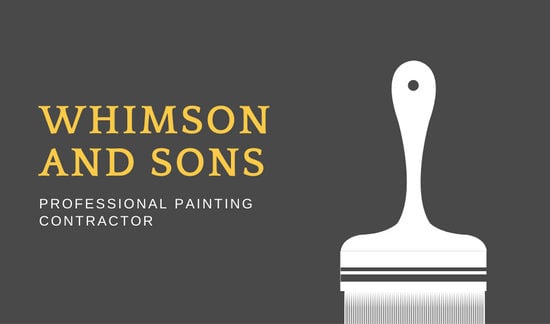Trick Seasonal Considerations For Commercial Outside Paint: What You Need To Be Educated Regarding
Trick Seasonal Considerations For Commercial Outside Paint: What You Need To Be Educated Regarding
Blog Article
Content Writer-Fox Chaney
When you're intending a commercial exterior painting job, seasonal elements can make or damage your results. You'll wish to think about just how temperature and moisture effect paint application and drying times. Choosing a knockout post can ensure your paint adheres effectively and lasts longer. However which periods are truly the most effective for this kind of job? Allow's explore the key elements that can affect your job's success.
The Effect of Temperature on Paint Application
When you're planning an industrial external painting project, the temperature level can dramatically impact how well the paint sticks and dries out.
Ideally, you want to paint when temperatures range between 50 ° F and 85 ° F. If it's as well cold, the paint might not heal effectively, bring about issues like peeling off or breaking.
On the other hand, if it's too hot, the paint can dry out also promptly, stopping appropriate bond and leading to an irregular finish.
You ought to also take into consideration the moment of day; morning or late afternoon supplies cooler temperature levels, which can be a lot more favorable.
Always check the manufacturer's referrals for the certain paint you're using, as they frequently provide guidance on the ideal temperature array for optimum outcomes.
Humidity and Its Impact on Drying Times
Temperature level isn't the only ecological element that influences your business external paint project; humidity plays a substantial function also. High humidity levels can slow down drying times substantially, impacting the total high quality of your paint work.
When the air is saturated with wetness, the paint takes longer to treat, which can bring about problems like poor attachment and a higher risk of mildew development. If you're painting on a particularly moist day, be planned for extended delay times between coats.
https://emilianowvvwr.laowaiblog.com/34484605/immerse-on-your-own-in-a-world-where-the-magic-of-color-and-technique-comes-active-with-the-hands-of-indoor-painters-who-artfully-transform-homes-with-their-precision-and-creative-thinking to keep track of neighborhood climate condition and plan accordingly. Ideally, aim for moisture levels in between 40% and 70% for ideal drying.
Maintaining these factors in mind ensures your job remains on track and provides a long-term finish.
Best Seasons for Commercial Exterior Paint Projects
What's the very best time of year for your industrial outside paint projects?
Spring and early loss are usually your best options. During these periods, temperatures are mild, and humidity degrees are usually lower, producing perfect problems for paint application and drying out.
Stay clear of summer season's intense heat, which can cause paint to dry as well swiftly, resulting in inadequate bond and surface. In a similar way, wintertime's chilly temperature levels can hinder correct drying out and treating, taking the chance of the long life of your paint job.
Aim for days with temperatures in between 50 ° F and 85 ° F for optimal outcomes. Bear in mind to inspect the regional weather prediction for rainfall, as damp conditions can destroy your task.
Planning around these aspects ensures your paint job runs efficiently and lasts much longer.
Final thought
In conclusion, planning your business outside painting projects around seasonal considerations can make a substantial difference in the end result. By scheduling work during the suitable temperature levels and moisture degrees, you'll make certain much better adhesion and drying times. Remember to watch on regional weather report and choose the right time of year-- springtime and early loss are your best options. Taking these actions will certainly help you accomplish a long lasting and specialist coating that lasts.
